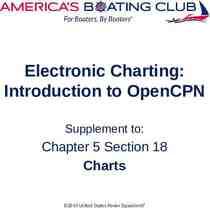1 Module #2 – Community Assessment
20 Slides762.00 KB
1 Module #2 – Community Assessment
2 Why Conduct A Community Assessment? It supports community organization that leads to a Shared Vision and commitment It is major part of implementing a Community Dialogue on change It surfaces dissatisfaction with the status quo and builds momentum for change It helps identify strengths and weaknesses It leads to prioritization of issues It helps focus community resources and efforts
3 Assessments Focus On Four Primary Areas Physical Infrastructure Human Capital Economic Base & Competitiveness Social Capacities
4 External Assessments External – Performed by groups or individuals from outside the community. Narrowly focused. Is this community a good match for our specific business? – Determine location assets and business potential – Evaluate community against selection criteria – Support selection by target industries – Collect market data
5 Internal Assessments Internal -- What do we need to do to improve our community to make it more attractive for new residents and businesses? – – – – – – – Prepare the community for development Identify its strengths and weaknesses Identify potential threats to development Identify infrastructure issues Identify social issues What or who can be attracted here, now? How can we capitalize on strengths and opportunities, and eliminate or lessen the impact of negatives and threats?
6 Assessments Also Focus On Action Issues Community readiness (comfort/complacency) Leadership Infrastructure Issues needing attention Assets for development Competitiveness Quality of life
7 Data Gathered Needs to be from both Objective & Subjective Sources Objective Data Factual Impartial Impersonal Subjective Data Impression Attitude Feeling
8 Community Development Features with Objective Data Labor market Market accessibility Transportation Utilities Sites and buildings Taxes Incentives Financial assistance Education and training Regulatory environment Quality of life
9 Sources of Objective Data State employment office U.S. Bureau of Labor Statistics U.S. Bureau of Census Local labor surveys Local utilities Edison Electric Institute American Gas Association Local telecom company Local tax assessor or clerks State economic development office State Revenue Offices Commerce Clearing House
10 Sources of Objective Data (continued) Employers Third party information – data sources State economic development office Local education institutions Private Industry Council Local office of State Employment Agency
11 Louisiana Data Sources Louisiana Department of Labor – Unemployment – Workforce – Worker Training Programs Department of Transportation and Development – Highway Construction Projects and Funding – Traffic Counts – Assistance on repair and maintenance priorities
12 Louisiana Data Sources (continued) Department of Education - District and School Report Cards Student Performance on Standardized Tests Leap Test Performance (LA’s grade promotion / graduation tests) Suspension, Attendance, and Dropout Rates Teacher Certification and Educational Levels Louisiana Economic Development Regional Representatives Site and Building Data Base Industry Clusters (Targeted Industries) Grants and Technical Assistance Training Programs
13 Louisiana Data Sources (continued) Regional Planning Districts – Regional Data – Geographic Data and Maps (GIS) Aerial Photography Enterprise Zones – Recreational Plans – Transportation Plans
14 Community Development Features with Subjective Data Leaders committed to change General positive attitude (Can do spirit!) History of success Community pride Acceptance and obvious welcome Business Climate – Existing businesses are “healthy” and locally supported – Businesses involved in the development process – Lack of “Red-Tape” Land owners (farmers and businesses) willingness to sell property
15 Techniques for Gathering Subjective Data Asking questions Listening Observing Focus group interviews Attitude surveys Key informant interviews Subject focused surveys Public meetings Community workshops
16 Subjective Data Sources and Techniques Surveys – Written Surveys Carefully Word Questions Pilot Test and Revise Paper and Internet Based Tabulate and Report Results To All – Observation Windshield Tour Travel All Sections of Town Use Digital Camera
17 What Did You Find? Rating Observations Assessment Factors Ratings Point Value Poor 0 Average 1 Good 2 Safety Of Investment (police, fire, emergency services) Average 1 Quality Of School System Average 1 Parks And Recreational Opportunities Average 1 Housing Availability Poor 0 Quality College/University Nearby Good 2 Social Infrastructure Broad-Based "Can-Do" Spirit Low Cost Of Living For Rural Areas Availability Of Quality Health Care
18 Categorizing Findings – SWOT Analysis Once findings are determined - conduct a SWOT analysis Internal To The Community – Strengths – Weaknesses External To The Community – Opportunities – Threats
19 Moving From Assessment to Planning Create PowerPoint Presentation Share assessment report and all results in public meeting – Share as “draft report” – Post report on website in Acrobat – Offer, but charge for copies Invite all citizens Present findings, ask for feedback, listen, do not be defensive Reflect on what was discovered and what was heard Organize and move to the planning phase
20 LouisianaCommunityNetwork.org

























